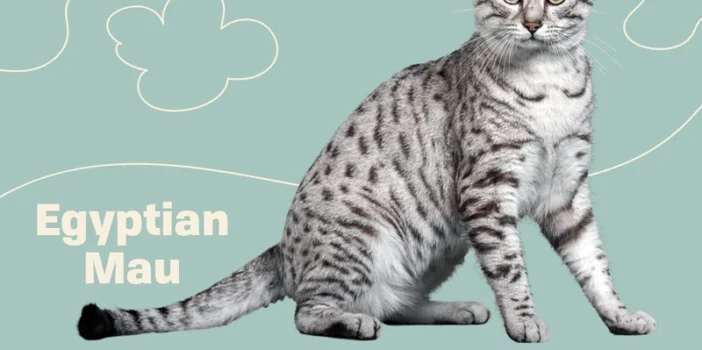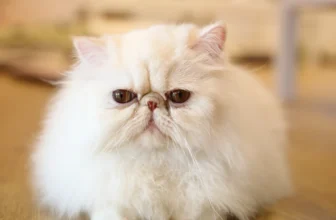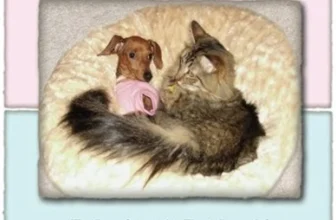Amid the lion roars and monkey chatters at the National Zoo, there’s a feline celebrity that stands out – Dharma, the California Spangled Cat. This rare and exotic breed has a fascinating history, unique appearance, and playful personality that have captured the hearts of many animal lovers. In this article, we’ll delve deeper into Dharma’s life at the National Zoo, her role in scientific research, and the dedicated keepers who look after her. But first, let’s learn more about the California Spangled Cat and why it’s so special.
The California Spangled Cat Breed
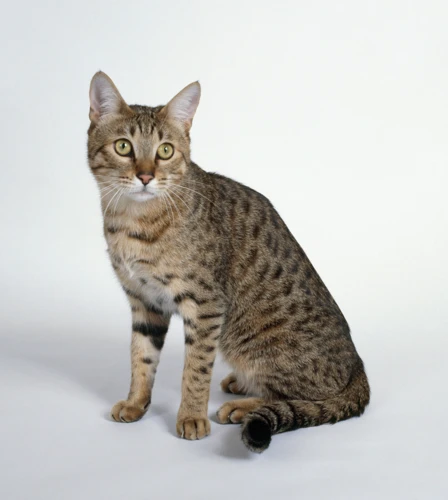
The California Spangled Cat is a unique breed that’s not only captivating but is also one of the most endangered feline species in the world, with only a few hundred left. Their charisma, distinctive coat patterns, and playful personalities make them a popular choice amongst cat lovers. Behind this amazing breed, however, lies a history of innovation, diversity, and struggle. Let’s dive deeper into the history, appearance, and conservation efforts of this incredible cat breed.
Brief History
The California Spangled Cat has an interesting and unique history. In the 1970s, a conservation-minded author named Paul Casey set out to create a cat breed that resembled wild cats. He hoped that this would raise awareness about the plight of endangered wild cats and encourage people to protect them. Casey bred several different breeds of cats, including Siamese, Abyssinians, and American Shorthairs, to create the California Spangled Cat.
The new breed quickly garnered attention and became popular in the United States. Celebrities such as Farrah Fawcett, Barbra Streisand, and Diane Keaton were among the first to own California Spangled Cats. The breed was also featured in advertisements for companies like IBM and Ford.
Sadly, the California Spangled Cat’s popularity was short-lived. By the late 1980s, the breed had all but disappeared. There are several reasons for this, including high costs and difficulty in breeding, as well as the rise of other exotic breeds like the Bengal and the Savannah.
Fortunately, the California Spangled Cat has not been completely forgotten. The breed is now recognized by some cat registries, such as The International Cat Association, and there are still a few breeders who specialize in California Spangled Cats. The breed’s unique history and conservation message continue to be remembered and celebrated by cat lovers around the world.
Interesting fact: In 1986, the California Spangled Cat was honored with its own postage stamp in the Central African Republic.
Source: California Spangled Cat History
Appearance and Personality
California Spangled cats have a unique appearance and personality that sets them apart from other breeds. They are medium to large-sized cats that weigh between 8 to 15 pounds and have a muscular and athletic build. Their fur is short and has a variety of color patterns, including brown tabby, black, silver tabby, and spotted tabby.
| Appearance | Personality |
| Medium to large size | Friendly and social |
| Muscular and athletic build | Active and playful |
| Short fur | Intelligent and curious |
| Various color patterns | Loyal and affectionate |
These cats are known for their expressive eyes that come in shades of gold, green, and blue. Their ears are rounded, and their noses have a slight curve. California Spangled cats have a distinctive look that resembles their wild ancestor, the leopard.
In terms of personality, California Spangled cats are friendly, social, and enjoy the company of their human companions. They are active and playful, requiring plenty of exercise and mental stimulation to keep them happy and healthy. They are also intelligent and curious cats that enjoy exploring their surroundings.
Additionally, California Spangled cats are known for their loyalty and affection. They are devoted to their owners and enjoy being part of the family. With proper socialization, these cats get along well with children and other pets.
The California Spangled cat breed is an excellent choice for anyone seeking an active, friendly, and loyal companion.
Rarity and Protection
The California Spangled Cat is a rare breed, with less than 100 cats known to exist worldwide. Despite its rarity, the breed was developed in the late 1970s in the United States. Inspired by wild felines such as leopards and ocelots, Paul Casey, a Hollywood writer, created this unique breed with the intention of drawing attention to the conservation of wild feline populations.
Due to the cat’s rarity, conservationists have been working to protect and preserve the breed. A major step in this direction was taken in 1986 when the California Spangled Cat was officially recognized by The International Cat Association (TICA). However, in spite of these measures, the breed still faces the risk of extinction.
To prevent this from happening, breeders and cat-lovers alike have taken up the responsibility of fostering California Spangled Cats. Through careful breeding techniques and responsible pet ownership, they hope to increase the breed’s population and protect it for generations to come. Fortunately, the breed is known to be hardy and disease-resistant, which makes it well-suited to survive and thrive in domestic environments.
A key concern for conservationists is the impact of human activities on wild feline populations, specifically habitat destruction. By owning and fostering a California Spangled Cat, individuals can contribute to the conservation of wild populations by raising awareness for the cause and supporting organizations with similar values.
The rarity and uniqueness of the California Spangled Cat reflects the importance of conservation and responsible pet ownership. Cat lovers and conservationists must come together to protect and preserve this rare breed. If you are interested in fostering a California Spangled Cat, make sure to check out these fostering tips or learn more about conservation efforts for this magnificent breed.
Dharma’s Life at National Zoo
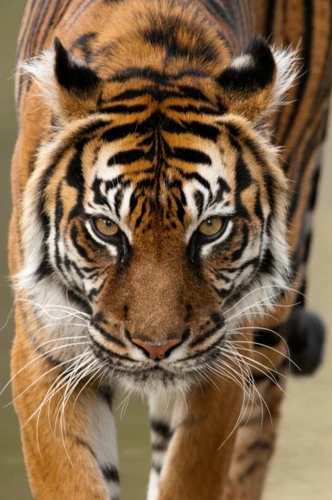
After arriving at the National Zoo, Dharma’s life took a drastic turn. She transitioned from a domestic cat to a conservation ambassador for her rare breed, the California Spangled Cat. Her days are filled with training, playtime, and important research projects. Let’s take a closer look at Dharma’s life at the National Zoo and how she’s making a difference.
Arrival and Training
Dharma, the California Spangled Cat, arrived at the National Zoo as a kitten in 2019. Her keepers immediately began training her to adjust to her new surroundings. She was given a space in the zoo’s Cat House, which was specially equipped with perches for climbing and toys for playing.
Training methods included:
- Positive reinforcement through treats and praise when Dharma correctly followed commands
- Clicker training to mark desired behaviors
- Creating a routine to establish trust and consistency with her keepers
Her keepers were patient and kind, giving her time to acclimate to her new environment. Over time, Dharma grew more comfortable with her keepers and her new home.
Some of Dharma’s training accomplishments include:
- Learning to come when called
- Learning to walk on a leash for daily walks outside of the Cat House
- Learning to participate in medical procedures without fear or stress
Her training has also aided in the zoo’s research on the behavior and intelligence of cats. Through her training, the zoo hopes to learn more about the unique abilities and behaviors of the California Spangled Cat breed.
Daily Life at the Zoo
Dharma, the California Spangled cat, has been living in the National Zoo for several years now and has adjusted well to her daily routine. Here is a glimpse of her daily activities as a resident of the zoo:
- Morning Exercise: Every morning, Dharma starts her day with a quick exercise routine. Her keepers provide her with a variety of toys and scratching posts to play with, which keeps her engaged and active.
- Breakfast Time: After her exercise routine, Dharma is served a healthy breakfast of nutritious cat food. Her keepers take care to ensure that she receives a balanced diet that meets all her nutritional needs.
- Training Sessions: Like all animals in the National Zoo, Dharma undergoes regular training sessions with her keepers. During these sessions, they teach her new behaviors and tricks to keep her mentally stimulated.
- Interaction with Visitors: Dharma is a popular attraction in the zoo, and visitors come from far and wide to catch a glimpse of her. Her keepers allow visitors to interact with Dharma from a safe distance and answer any questions they may have about her breed and life at the zoo.
- Afternoon Siesta: After an eventful morning, Dharma takes a midday nap in her cozy enclosure.
- Enrichment Activities: To keep Dharma engaged and entertained, her keepers provide her with various enrichment activities throughout the day. This may include new toys, puzzles, or even scent trails to explore.
- Dinner Time: Just like breakfast, Dharma’s dinner is also carefully prepared to meet her nutritional needs. After dinner, she may be given a small treat as a reward for good behavior.
- Bedtime: As the sun sets, it’s time for Dharma to wind down and rest. Her keepers ensure that her enclosure is comfortable and relaxing so that she can have a peaceful night’s sleep.
Dharma’s daily life at the zoo is carefully curated to meet all her physical and mental needs. Her keepers take great care to provide her with a stimulating and comfortable environment that allows her to thrive.
Contribution to Research
Dharma’s presence at the National Zoo is not only for public display but also for research purposes. As a California Spangled cat, Dharma possesses unique physical and behavioral traits that make her an interesting subject of study.
One of the main areas of research that Dharma contributes to is feline behavior. The zoo staff carefully observes her interactions with other animals and humans, documenting her communication methods and patterns of activity. Dharma’s behavior is analyzed and compared with that of other feline species, providing valuable insights into cat behavior as a whole.
Dharma is also subject to regular medical check-ups and tests. Her health and well-being are monitored closely, and any changes are noted and analyzed. This information is used to improve the care and treatment of all felines living at the zoo.
Another area where Dharma contributes to research is genetics. Her breed, California Spangled cats, are relatively rare, and there is still much to be learned about the genetics that give them their unique features. The staff at the National Zoo take regular DNA samples from Dharma, which are analyzed to better understand the genetic makeup of her breed.
Dharma’s presence at the National Zoo contributes significantly to research in feline behavior and genetics. Through her daily activities and interactions, Dharma provides researchers with a wealth of information that can be used to improve the understanding and care of not only California Spangled cats but all feline species.
Meet Dharma’s Keepers

The team at the National Zoo responsible for taking care of Dharma, the California Spangled Cat, is made up of dedicated and passionate individuals who share a deep love for animals. Their primary goal is to provide Dharma with the best possible care and ensure that she lives a healthy and happy life.
Samantha Johnson, Dharma’s primary keeper, has been working at the National Zoo for over a decade. She is a highly experienced keeper who has worked with a variety of animals, including big cats, primates, and birds. Samantha is responsible for Dharma’s day-to-day care, which includes feeding her, cleaning her enclosure, and ensuring that she receives proper exercise and enrichment.
Dr. Mark Lee is the veterinarian in charge of Dharma’s health and wellbeing. He works closely with Samantha and the rest of the team to monitor Dharma’s health, and provides any necessary medical care. Dr. Lee has a wealth of knowledge and experience in animal medicine and has worked with a variety of species, including big cats and exotic birds.
Rebecca Martinez is the animal behaviorist on Dharma’s team. She has a passion for studying animal behavior and is responsible for ensuring that Dharma’s behavioral needs are met. Rebecca works with Samantha and Dr. Lee to develop enrichment activities and training programs that help keep Dharma mentally and physically stimulated.
These experts work together tirelessly to care for Dharma and ensure that she receives the best care possible. They take great pride in their work and are dedicated to ensuring that all of the animals in their care receive the love, attention, and care that they need to thrive.
California Spangled Cats in Popular Culture
If you’re a fan of cats and pop culture, you might have come across an elegant breed that has been making appearances in various mediums for decades. Their striking appearance and unique personality make them stand out among other felines. These cats have unique features that make them easily recognizable and beloved by many. Let’s explore their presence in popular culture and the impact they’ve had on it.
Books and Movies
The unique appearance and personality of the California Spangled cat has made it a popular breed in various forms of media. In literature, the cat made an appearance in the children’s book series “The Cat Who…” by Lilian Jackson Braun, where the titular character, Koko, is described as a California Spangled cat. Koko is known for his intelligence and ability to solve mysteries alongside his human companion.
In the film industry, the California Spangled cat has also made several appearances. In the 1996 comedy film “That Darn Cat,” the main feline character, D.C., is played by a California Spangled cat named Amber. The film showcases the cat’s playful and mischievous personality, which is a common trait of the breed.
Additionally, the California Spangled cat is featured in the 1997 film “The Sixth Man.” This film follows the story of two brothers, one of whom dies and returns as a ghost to help his brother’s basketball team. The California Spangled cat named Angel serves as a companion to the main characters and provides comedic relief throughout the film.
The breed has also been mentioned in several TV shows, including “The X-Files” and “Sex and the City.” In “The X-Files,” the character of Agent Mulder has a California Spangled cat named Queequeg, who becomes a recurring character in the series. In “Sex and the City,” the character of Charlotte York owns a California Spangled cat named Mr. Pussy.
The California Spangled cat’s appearance in popular media has contributed to its increasing popularity among cat lovers. Its unique spotted coat and playful personality make it a desirable breed for many households. As a result, the breed’s protection and conservation efforts have become increasingly important to ensure their long-term survival.
Celebrities Who Own California Spangled Cats
It’s no secret that many celebrities have love for exotic pets and the California Spangled Cat is no exception. These cats are prized possessions of the elite and famous, and there are many A-listers who are known to have them as pets.
1. Nicolas Cage is a well-known cat lover who has owned several cats over the years, including a California Spangled cat named Lewis. Cage is known to be very passionate about cats and is often seen taking his feline friends with him on movie sets.
2. Jaclyn Smith, the famous actress and businesswoman, is another proud owner of a California Spangled cat. Smith, who rose to fame with her role in the hit TV show “Charlie’s Angels,” has always been passionate about animals and has dedicated her time and money to various animal welfare organizations.
3. Jake Gyllenhaal, the popular Hollywood actor, has also been spotted with a California Spangled cat in tow. Gyllenhaal, who has starred in numerous blockbuster movies, is known to be a cat lover and has been seen with his feline friends on red carpets and movie sets.
4. Ted Nugent, the rock and roll icon, also owns a California Spangled cat. Nugent, who is known for his passionate commitment to hunting and conservative politics, is also very fond of cats and has been a long-time owner of this exotic breed.
5. Eartha Kitt, the legendary singer and actress, was also a proud owner of a California Spangled cat. Kitt, whose career spanned several decades, was known for her love of cats and other exotic animals, and was often seen with her feline friends at public events.
These are just a few examples of the many celebrities who have fallen in love with the California Spangled Cat. With their distinctive appearance and playful personalities, it’s no surprise that this breed has gained such a huge following among the rich and famous.
Conclusion
In conclusion, Dharma the California Spangled Cat has certainly made a name for herself at the National Zoo. As one of the few of her kind in captivity, she has become an important ambassador for her breed and for the conservation efforts necessary to protect endangered animals like her.
Not only has Dharma contributed to research, but she has also brought joy to countless visitors to the zoo with her unique personality and beautiful appearance. Her keepers have become attached to her, and their love and care for her is evident in the way she thrives under their supervision.
The California Spangled Cat is a rare breed, and Dharma is a prime example of why they are so special. From her stunning coat to her intelligent and playful personality, Dharma has captured the hearts of many. Though she is just one cat, she serves as a reminder of the importance of protecting endangered species and the unique beauty that each animal brings to our world.
Overall, Dharma’s story at the National Zoo is a testament to the important role that zoos can play in both conservation and education. By showcasing rare animals like the California Spangled Cat and allowing visitors to connect with them, zoos can help to inspire a love and appreciation for wildlife and a deeper understanding of the need to protect it.
Frequently Asked Questions
What is the California Spangled Cat breed?
The California Spangled Cat is a unique domestic cat breed that is known for its wild appearance. It was created over 30 years ago and borrows traits from wildcats like leopards and ocelots.
What is the history of the California Spangled Cat breed?
The California Spangled Cat breed was developed in the 1980s by Paul Casey, a Hollywood scriptwriter, who was inspired by the declining number of wildcats in their natural habitat.
What does a California Spangled Cat look like?
California Spangled Cats have a muscular build and striking wild features. They have a short, dense coat that comes in a range of colors such as bronze, gold, and silver. They are also known for their distinctive spots and stripes.
What is the personality of a California Spangled Cat?
California Spangled Cats are known for their playful and outgoing personalities. They are intelligent and need plenty of stimulation, so they make great pets for families and active individuals.
Are California Spangled Cats a rare breed?
Yes, California Spangled Cats are a rare breed. There are only a few breeders in the world and their numbers are limited.
What kind of protection does the California Spangled Cat receive?
The California Spangled Cat breed is protected under international copyright law to prevent the breed from going into extinction. Breeders must obtain licenses to breed and sell California Spangled Cats.
How did Dharma come to the National Zoo?
Dharma was donated to the National Zoo by a private breeder who wanted to contribute to research and education.
What kind of training did Dharma receive at the National Zoo?
Dharma received training in basic obedience, as well as advanced training to participate in research studies.
What is Dharma’s daily life like at the National Zoo?
Dharma has a strict daily routine that includes training exercises and playtime. She is also cared for by a team of dedicated keepers who ensure she is healthy and happy.
What research has Dharma contributed to at the National Zoo?
Dharma has participated in several research studies related to feline behavior and cognition. Her participation has helped to advance our knowledge of how cats think and learn.

